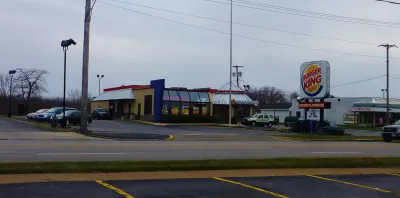Public health analysts and justice activists are tackling food deserts in a state known for its agricultural output. Low-income neighborhoods of color are the hardest hit by a lack of grocery options.

Bobbi Murray profiles the food deserts of Los Angeles: neighborhoods where the nearest large grocery store lies more than a mile away. Food inequality, and associated health problems like obesity and diabetes, follows in the path of poverty. From the article: "Stores with the $15 cold-pressed juices (with a shot of turmeric) get Yelped. Less so are those stores in neighborhoods where the lettuce, if any, is wilted and unappetizing, and the 99-cent Flamin' Hot Cheetos are close to the register."
Analysts from public health organizations like Community Health Councils (CHC) see a perfect storm in California's food deserts: cheap, unhealthy options close to home and expensive, healthy choices far away. Obesity becomes rampant: residents look well-fed, but they are really malnourished.
In the face of this problem, which affects neighborhoods like South L.A., Historic Filipino Town, Boyle Heights, and Southeast L.A., "CHC and allies are pursuing a number of community-based approaches to re-organizing L.A.'s food system, including more inner-city farmers markets and a strategy to bring more supermarkets into South L.A. They have fought to set limits on the number of fast-food restaurants in South L.A."
FULL STORY: Finding Nutrition in the Food Deserts of California

Maui's Vacation Rental Debate Turns Ugly
Verbal attacks, misinformation campaigns and fistfights plague a high-stakes debate to convert thousands of vacation rentals into long-term housing.

Planetizen Federal Action Tracker
A weekly monitor of how Trump’s orders and actions are impacting planners and planning in America.

In Urban Planning, AI Prompting Could be the New Design Thinking
Creativity has long been key to great urban design. What if we see AI as our new creative partner?

King County Supportive Housing Program Offers Hope for Unhoused Residents
The county is taking a ‘Housing First’ approach that prioritizes getting people into housing, then offering wraparound supportive services.

Researchers Use AI to Get Clearer Picture of US Housing
Analysts are using artificial intelligence to supercharge their research by allowing them to comb through data faster. Though these AI tools can be error prone, they save time and housing researchers are optimistic about the future.

Making Shared Micromobility More Inclusive
Cities and shared mobility system operators can do more to include people with disabilities in planning and operations, per a new report.
Urban Design for Planners 1: Software Tools
This six-course series explores essential urban design concepts using open source software and equips planners with the tools they need to participate fully in the urban design process.
Planning for Universal Design
Learn the tools for implementing Universal Design in planning regulations.
planning NEXT
Appalachian Highlands Housing Partners
Mpact (founded as Rail~Volution)
City of Camden Redevelopment Agency
City of Astoria
City of Portland
City of Laramie


























